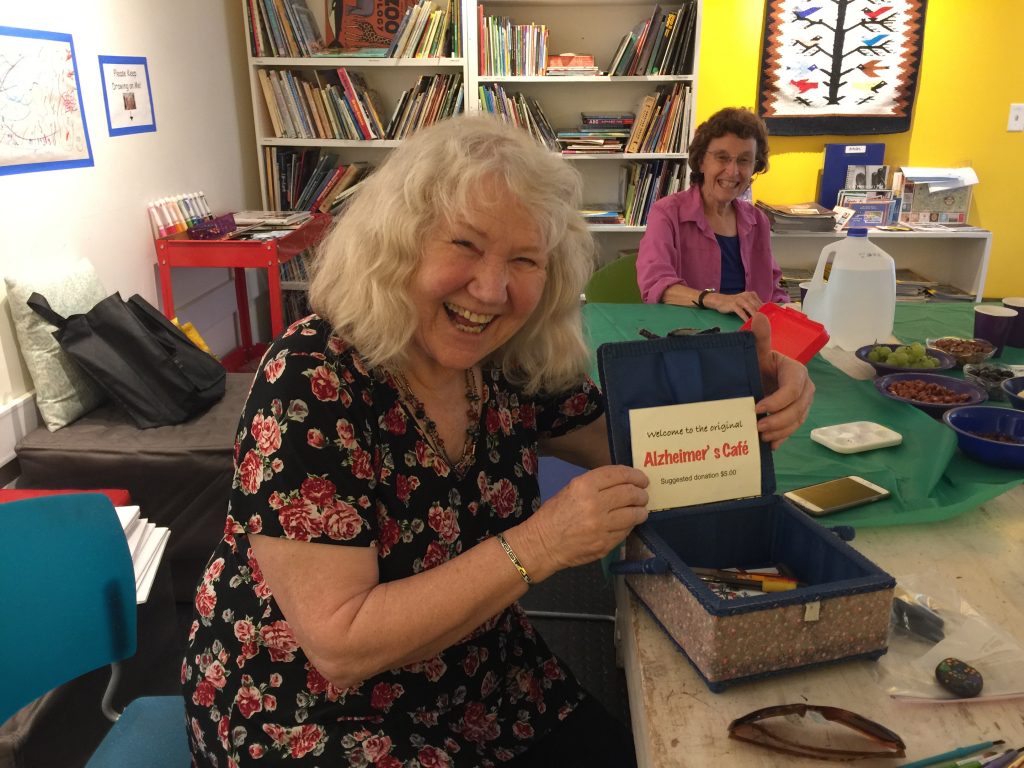Posts Tagged ‘memory care’
Dementia Friendly Cafes: Inviting Creativity and Connection
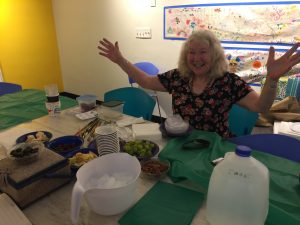 More than 10 years ago, Jytte Lokvig, PhD, was scanning the internet for additional information about dementia. On one of her Google searches she saw the words “Alzheimer’s Cafe” posted by Dr. Bere Miesen, who founded the first Alzheimer’s cafe in Leiden, the Netherlands in 1997. That phrase electrified her. She leapt out of her chair, much to the dismay of her cat, who was cozily sleeping across her feet, and declared, “I am going to make that happen in the U.S.!” She’d been working with people who were living with dementia in community settings for some years, orchestrating art, music, craft and other meaningful projects. But she felt something was missing. That something, she realized, was engagement in the community.
More than 10 years ago, Jytte Lokvig, PhD, was scanning the internet for additional information about dementia. On one of her Google searches she saw the words “Alzheimer’s Cafe” posted by Dr. Bere Miesen, who founded the first Alzheimer’s cafe in Leiden, the Netherlands in 1997. That phrase electrified her. She leapt out of her chair, much to the dismay of her cat, who was cozily sleeping across her feet, and declared, “I am going to make that happen in the U.S.!” She’d been working with people who were living with dementia in community settings for some years, orchestrating art, music, craft and other meaningful projects. But she felt something was missing. That something, she realized, was engagement in the community.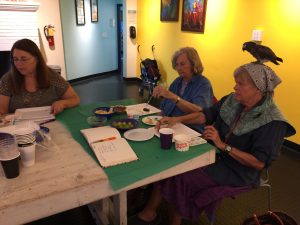 From that inspiration, Jytte created the original U.S. Alzheimer’s Cafe in Santa Fe, NM in 2008. Ten years later, there are more than 300 cafes in the US that invite creativity and connection through dementia friendly cafes.
From that inspiration, Jytte created the original U.S. Alzheimer’s Cafe in Santa Fe, NM in 2008. Ten years later, there are more than 300 cafes in the US that invite creativity and connection through dementia friendly cafes.  “Would you like a round plate of a square one?” she asked.
“Would you like a round plate of a square one?” she asked.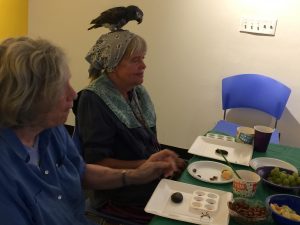
- Arrange a few snacks.
- Invite a guest or two, if you wish. This is an intergenerational project.
- Put a brightly colored plastic covering on the table.
- Squeeze some acrylic paint into a palette. Or use tempura or water colors.
- Offer a choice between two brushes.
- Offer a choice between two canvases: a cardboard paper plate, a river rock, paper, or other.
- Relax and let the painting unfold.
- If your loved ones need a little help, you can paint together. Or you can rest their hand on yours, while you paint to get them used to the movement of the brush.
- Appreciate the art by commenting on the color, the design, the shapes. Don’t ask them to identify the art: enjoy it as it is.
- Weave conversation into your time together.
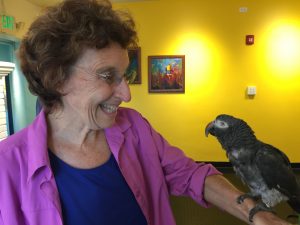
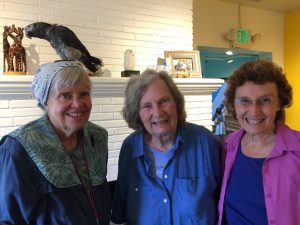
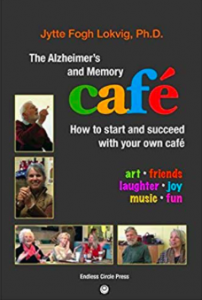

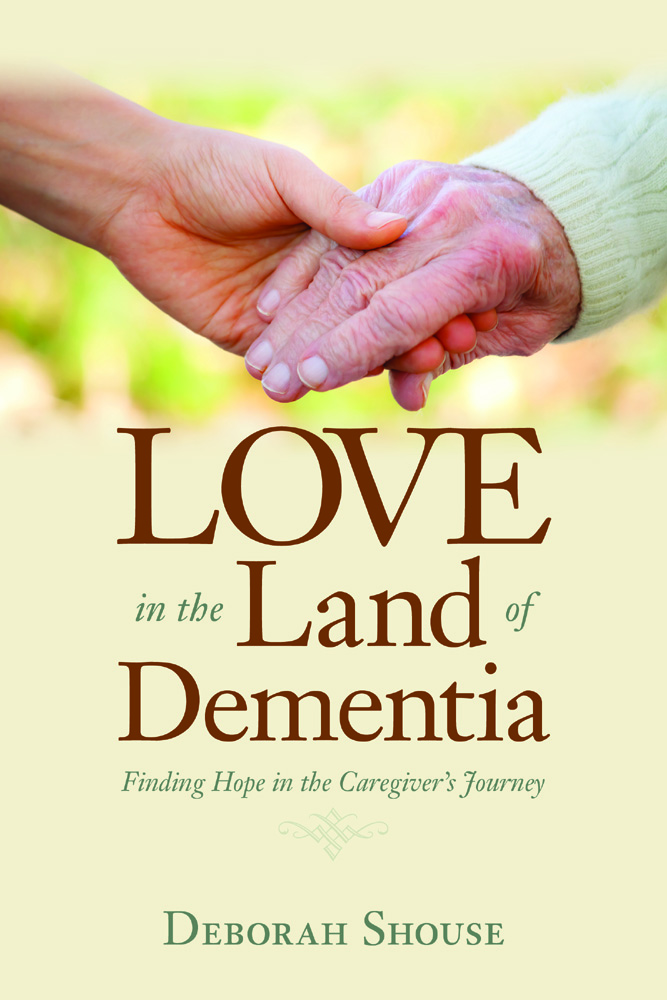
Finding Meaningful Memory Care
“I feel like I’ve been on extended vacation,” Ron’s father Frank said, after his first day in a memory care facility. “Today was really enjoyable.” Ron and I just melted with happiness. We had visited many facilities, with the hope of finding meaningful memory care with great activities. Frank couldn’t have said anything nicer.
It’s quite an emotional journey, finding meaningful memory care. So many of you have asked me for tips. I am re-posting the great ideas from my friend, Dr. El, Dr. Eleanor Feldman Barbera, PhD, author of The Savvy Resident’s Guide and a columnist for McKnight’s Long Term Care News.
Finding Meaningful Memory Care With Engaging Activities
“Remember, everything is an activity,” says Dr. El. She encourages care partners to seek a community with a dedicated memory care program, so people with cognitive impairments can benefit from all the offered activities.
“In a specialized unit, staff are trained to work with people who are living with dementia,” Dr. El says. “This training can help people enjoy greater independence.”
In one facility, a lady liked to wander into people’s rooms and take their jewelry. Rather than getting upset, the staff understood, framed this as “shopping,” and simply returned the jewelry.
“These kinds of insights create a calmer, slower-paced environment that reduces agitation,” says Dr. El.
Seek Structure, Soothing and Variety
Here are some things to look for, as you visit facilities:
Is there a home-like atmosphere?
Is there a structure to the day?
Are there calming activities scheduled for change of shift? Changing shift is disruptive, so some communities orchestrate a teatime with music or other soothing activities.
You’re also making sure there are a variety of activities throughout the day. These should include:
Outdoor Time: Taking people outside makes a big difference in mood, appetite, and the sense of connection to the world.
Movement: Exercise is an important component to health.
Nurturing: Look for activities that make people feel confident and good about themselves, such as spa days or activities that incorporate skills such as cooking, art, or gardening, modified to provide a “success” experience.
Engagement: Being engaged, rather than just entertained, inspires a sense of purpose, creativity, and social connection.
Kindness is Everything
“Meet with the recreational therapist,” Dr. El suggests. “Is she compassionate and caring? Are the staff members kind? You can have all the activities in the world but if they’re not done with gentleness and humanity, they won’t work.”
Let the recreation director know what your loved one likes to do and see if she can adapt the activity.
Stay Involved
Visit as often as you can and attend activities together. Encourage friends and relatives to join you. Meet other residents and get to know the families and staff.
“You can act as a connector to create friendships, so residents engage in their own interaction, even when you aren’t there,” Dr. El says.
For more information, visit Dr. Eleanor Feldman Barbera, PhD, http://www.eldercarewithdrel.com,

Treat yourself to Dr. El’s book, The Savvy Resident’s Guide
Finding Meaningful Memory Care
“I feel like I’ve been on extended vacation,” Ron’s father Frank said, after his first day in a memory care facility. “Today was really enjoyable.” Ron and I just melted with happiness. We had visited many facilities, with the hope of finding meaningful memory care with great activities. Frank couldn’t have said anything nicer.
It’s quite an emotional journey, finding meaningful memory care. I asked my friend, Dr. El, Dr. Eleanor Feldman Barbera, PhD, author of The Savvy Resident’s Guide and a columnist for McKnight’s Long Term Care News, for some tips.
Finding Meaningful Memory Care With Engaging Activities
“Remember, everything is an activity,” says Dr. El. She encourages care partners to seek a community with a dedicated memory care program, so people with cognitive impairments can benefit from all the offered activities.
“In a specialized unit, staff are trained to work with people who are living with dementia,” Dr. El says. “This training can help people enjoy greater independence.”
In one facility, a lady liked to wander into people’s rooms and take their jewelry. Rather than getting upset, the staff understood, framed this as “shopping,” and simply returned the jewelry.
“These kinds of insights create a calmer, slower-paced environment that reduces agitation,” says Dr. El.
Seek Structure, Soothing and Variety
Here are some things to look for, as you visit facilities:
- Is there a home-like atmosphere?
- Is there a structure to the day?
- Are there calming activities scheduled for change of shift? Changing shift is disruptive, so some communities orchestrate a teatime with music or other soothing activities.
You’re also making sure there are a variety of activities throughout the day. These should include:
Outdoor Time: Taking people outside makes a big difference in mood, appetite, and the sense of connection to the world.
Movement: Exercise is an important component to health.
Nurturing: Look for activities that make people feel confident and good about themselves, such as spa days or activities that incorporate skills such as cooking, art or gardening, modified to provide a “success” experience.
Engagement: Being engaged, rather than just entertained, inspires a sense of purpose, creativity, and social connection.
Kindness is Everything
“Meet with the recreational therapist,” Dr. El suggests. “Is she compassionate and caring? Are the staff members kind? You can have all the activities in the world but if they’re not done with gentleness and humanity, they won’t work.”
Let the recreation director know what your loved one likes to do and see if she can adapt the activity.
Stay Involved
Visit as often as you can and attend activities together. Encourage friends and relatives to join you. Meet other residents and get to know the families and staff.
“You can act as a connector to create friendships, so residents engage in their own interaction, even when you aren’t there,” Dr. El says.
For more information, visit Dr. Eleanor Feldman Barbera, PhD, http://www.eldercarewithdrel.com,
Treat yourself to Dr. El’s book, The Savvy Resident’s Guide
It Just Takes One Word to Make a Conversation: An Unexpected Halloween Treat
On my mother’s last Halloween, her memory care unit held a party. Pam, the nurse, brought a basket brimming with hats, shawls, and scarves. Pam set a floppy white hat on Mom’s silvery curls and draped a lacy purple shawl over her shoulders. In her new adornments, Mom looked both puzzled and happy.
But during the “treat” portion of the Halloween celebration, which featured M&M’s and chocolate chip cookies, Mom’s smile was unambiguous. All her life, Mom had adored sweets and her Alzheimer’s had not dimmed her enjoyment.
Then small children paraded through the facility, dressed as princesses, witches, super heroes, and ghosts. Volunteers handed the residents wrapped tootsie rolls.
“For the children,” they said.
Mom smiled at the adorable kitty cats and pirates who chanted “Trick or treat,” in wispy voices, but she did not relinquish her hold on the sweets; she did not share her candy.
“Mom, would you like to give the children some of your candy?” I asked as my mother gripped her treasure.
“No,” she said.
No. The word floated through my mind and I gazed at Mom, my mouth open, my mind euphoric. Perhaps I should have been chagrined at her selfishness but instead I was thrilled that she had actually responded to my question. It was the closest we’d come to conversation in weeks. I laughed with delight. Mom laughed.
For that moment, we were two women, simply laughing. For me, it was a most wondrous and unexpected treat.
Q 4 U:
Please share one of your unexpected treats.
